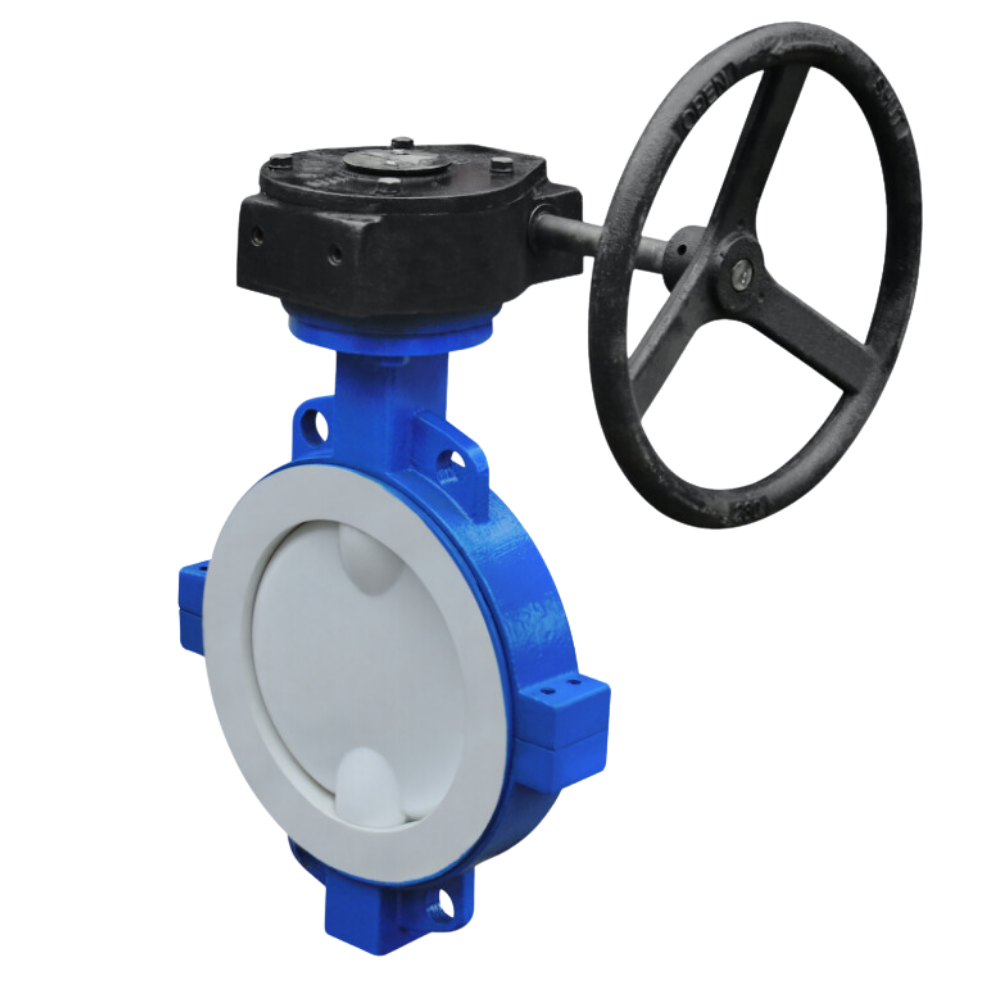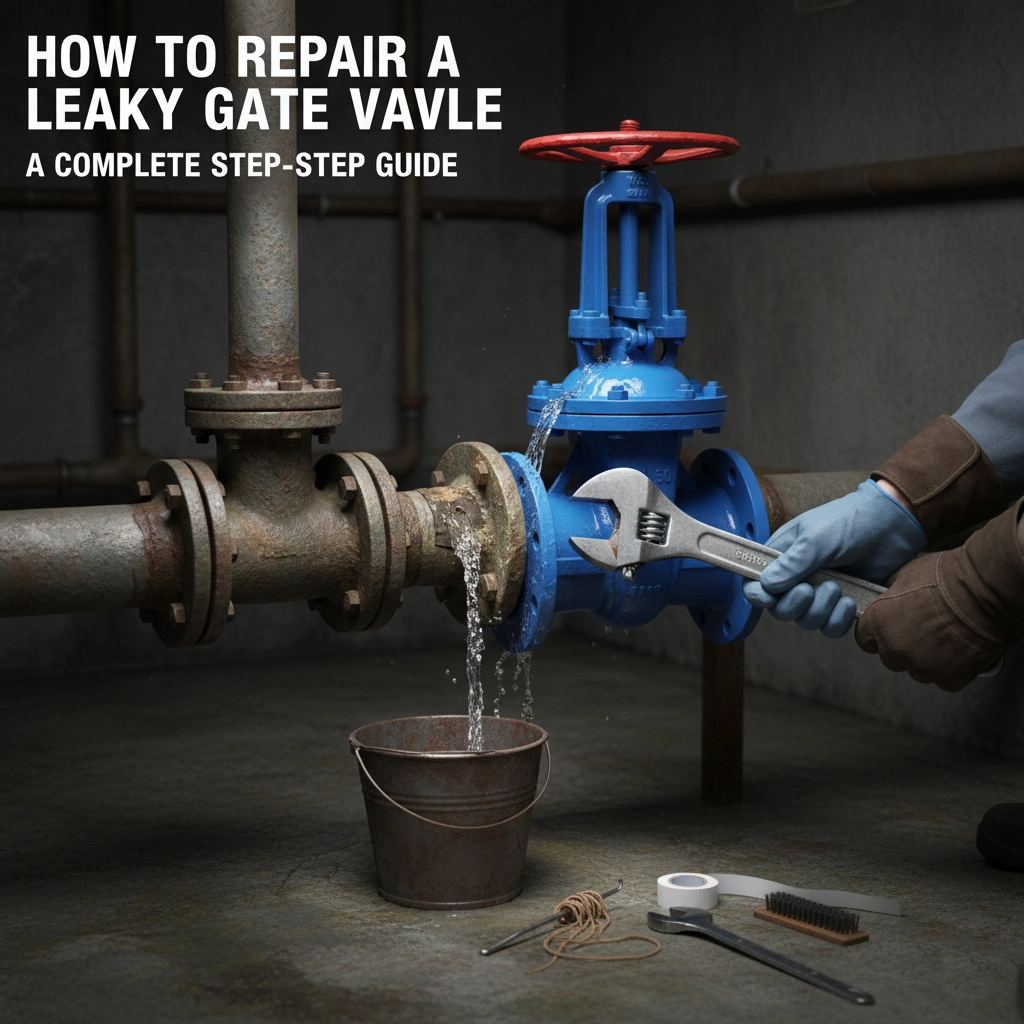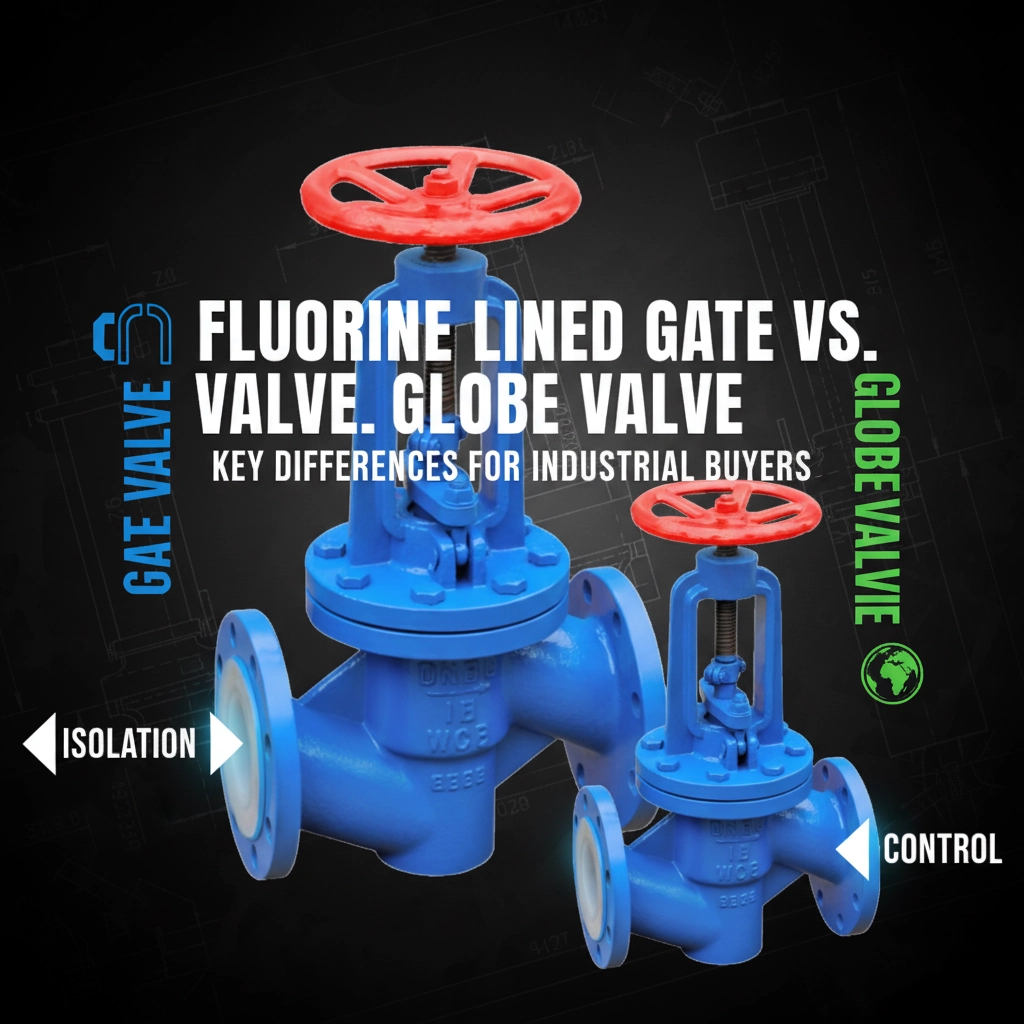

Butterfly valves — Valves identifiable by their butterfly-like disc which handles fluid flow, follow a 90 rotation which controls their opening/closing. And that’s why they’re also termed as quarter turn valves. Once lined with layers of PFA or PTFE, these butterfly valves can handle strong chemicals and higher temperatures. Continue on to learn more about PFA lined butterfly valves/PTFE lined butterfly valves.

The butterfly valve design is simple. It is made of the following components:
Butterfly valves handle fluid control by a revolving disc. When opened, the butterfly disc rotates so that the hole/bore is in line with the fluid. And this allows it to flow. When the valve is closed, the bore faces away from the fluid blocking flow.
Butterfly valves are apt for many industrial operations. However, specific pipes like those in chemical factories use PFA or PTFE lined butterfly valves. The components of the valve are similar. The only differentiable point is that these valves come with an extra internal layer.
Valves are lined with PFA/PTFE by making dovetail grooves on the inner side of the valve. Molten PFA is then poured onto these grooves and allowed to cool down. This solidifies it, creating a layer between the fluid and metal. In turn, this gives valves greater corrosion and temperature resistance.
| PFA Lining | PTFE Lining |
| More flexible but lower flex life | Less flexible but greater flex life |
| More expensive than PTFE | Cheaper than PFA |
| More susceptible to absorbing water leading to damage | Better hydrophobic properties |
| Melting point of 260°C | Melting point of 327°C |
| Generates more friction than PTFE | Lower coefficient of friction |
Fluoropolymer lined chemical resistant valves have these benefits:
Fluoropolymer lined butterfly valves are used to these operations:
Butterfly valves are lined with fluoropolymers by creating dovetail grooves on the inner valve body. Molten PFA/PTFE is then poured on these grooves and allowed to cool. Once cooled, it solidifies creating a layer covering the inner valve body. This provides greater corrosion resistance and temperature withstanding properties.
PFA Lined butterfly valves are used in high purity fluid handling because of the internal fluoropolymer lining. This lining prevents contamination by creating a layer between the inner valve body and fluids.
Fluoropolymer lined butterfly valves improve performance in corrosive environments by providing extra durability. This is done through the internal fluoropolymer layer which is chemically inert. This layer also prevents the valve body from coming in contact with corrosive fluids.
Resources:
PTFE Vs. PFA: A Detailed Comparison Guide | DCW (ptfedf.com)
Guide on How a Butterfly Valve Works | Dombor
What is a butterfly valve and where it is used in water supply? – Hawle

Your First Step to Fixing That Drip A dripping gate valve is more than just annoying. It signals that your plumbing needs attention. The constant drip wastes water. If ignored, it can lead to bigger damage. The good news? You can often handle a gate valve repair yourself. Most leaks come from two spots: the […]

If your system needs to handle abrasive slurry or corrosive fluids, rubber sleeves aren’t just a detail—they’re critical to keeping your pinch valves running longer and maintenance simpler. Let’s look at why these sleeves make such a difference and what that means for your bottom line. Why the Sleeve Matters Most In a pinch valve, […]

When you’re selecting gate valves for tough, corrosive environments, the choice matters—especially when comparing a fluorine lined gate valve to a standard globe valve. One offers chemical resilience and durability; the other gives precision control and sealing. Let’s break it down clearly so you know which suits your system best and why. What a Fluorine […]

Choosing the right type of pinch valve—manual, pneumatic, or electric—directly affects how your system performs. Each option has clear strengths depending on how your process runs, what kind of control you need, and the infrastructure already in place. This guide breaks down how they work and where each one fits best. Manual Pinch Valve: Simple […]



